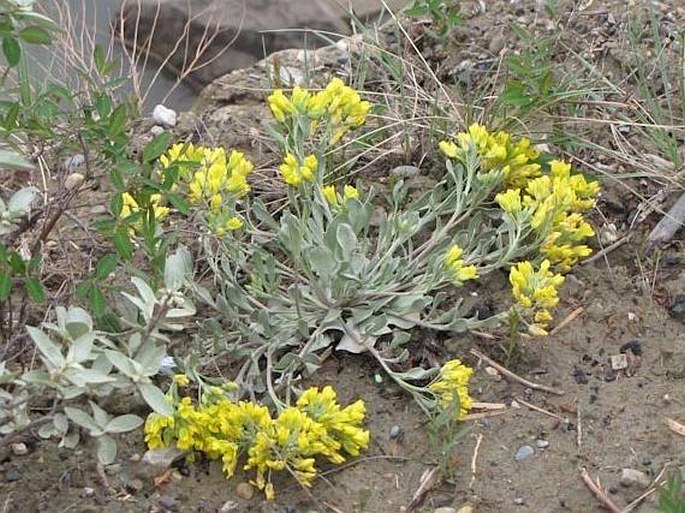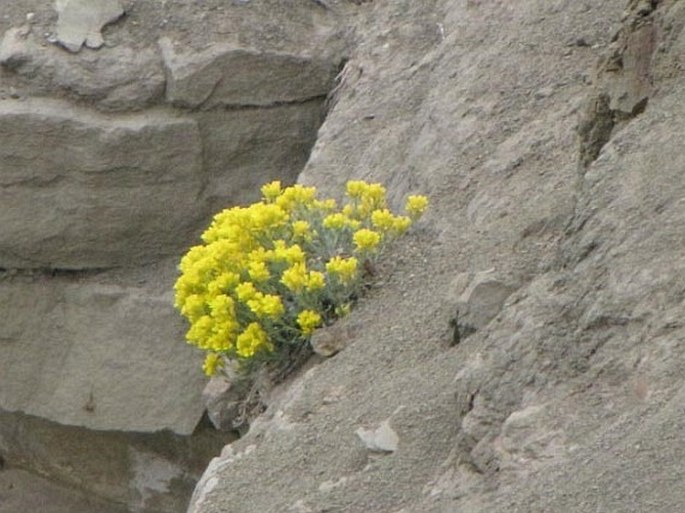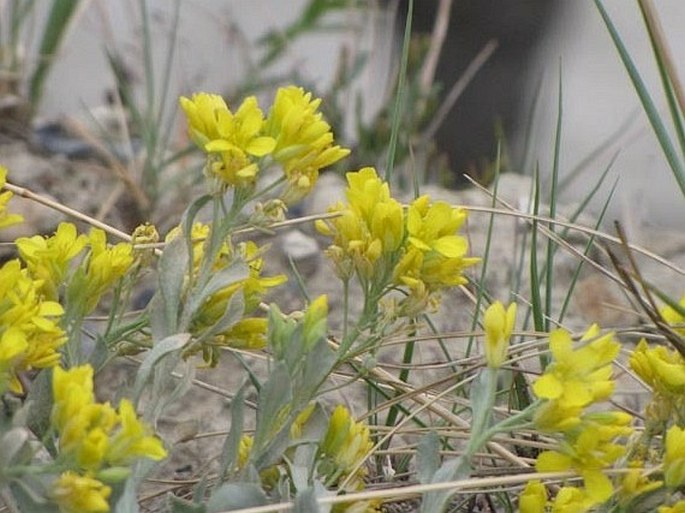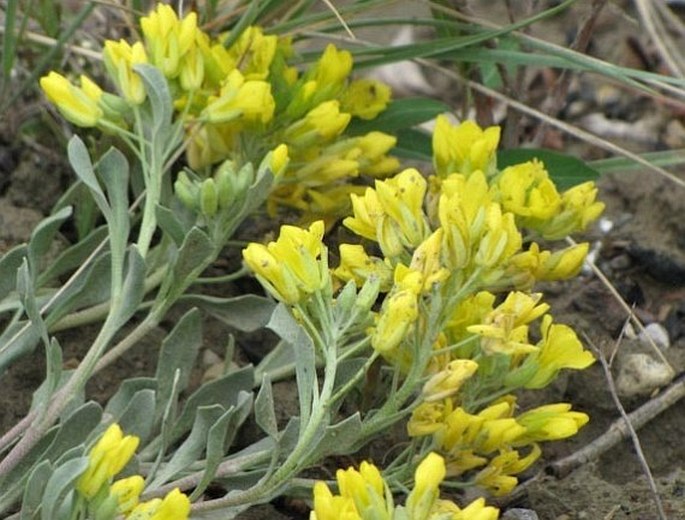Syn.: Coulteria didymocarpa (Hook.) Kuntze, Vesicaria didymocarpa Hook.
Family: Brassicaceae Burnett

Distribution: Endemic to a limited part of North America. Found in Alberta and British Columbia and in Idaho, Montana, North Dakota, Washington and Wyoming.
Ecology: Dry, open foothills slopes, prairie grasslands and often on cliffs. Elevations from 1000 to 2000 m. Blooms in June and July.

Description: Perennial herb. Stems 5–15 cm long, numerous, tufted, reclining, greyish green owing to dense silvery hairs, radiating from a woody crown. Basal leaves numerous, spatula-shaped, 2–8 cm long, 1–4 cm wide, stem leaves alternate, reduced in size upwards, surfaces covered in silvery, branched hairs. Inflorescence is a compact raceme, flowers yellow, 1–2 cm across, tetramerous, stamens 6, pistil 1. Fruit is a bladder-like silique with 2 lobes, about 2 cm across with 8 seeds.
Note: Blackfoot tribe used this plant to make medicinal tea to treat sore throats and cramps, and reduce swellings.


These images were taken in Canada, Alberta, Calgary, Bowmont Park (June 2012).


